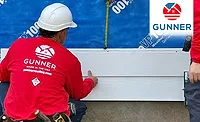Under One Roof - Hail and Wind Restoration
Under One Roof - Hail and Wind Restoration
That’s a question many of us who have worked “storm duty” have pondered, much to our dismay. Hail and windstorms damage tens of thousands of roofs every season, with an estimated cost to insurers ranging from $10 to 25 billion annually. That’s a lot of roofing jobs! Imagine what doing a few hundred of these jobs each year would do for your bottom line. It’s appealing arithmetic, but don’t overlook the pitfalls and additional costs.
Most hail and windstorms are localized events involving 500 to 5,000 properties, depending on population density and the scope and intensity of the storm. When they hit, demand for local roofing services spikes well above their capacity. Damaged roofs need to be repaired or replaced as quickly as possible to avoid weather exposure to the interior of the buildings. However, it isn’t merely a matter of racing to the scene and replacing the roofs. These claims have to be recognized, reported, inspected, estimated, adjusted, agreed upon and repaired. Then, with claim payment checks issued, the contractor who did the job has to be paid. Miss out on any one of these critical steps and watch out: The chaos of the storm is nothing compared to the chaos of doing a job when only a few of the essential details needed for full agreement with everyone are complete. You can’t simply head off to the big bonanza and sign as many jobs as possible with good intentions and high hopes. Often, that approach turns out to be a financial disaster for the optimistic, adventurous or unwary contractor. Preparation and planning are essential to success.
While the work itself may seem to be the same, storm-generated jobs are very different from routine roof replacement and maintenance work. Urgency changes everything. Routine work is mostly anticipated, budgeted and shopped for with bids and interviews that help differentiate the top performers. Then, payments are scheduled from the first to the final draw upon completion. There’s plenty of time to prepare estimates or bids and to work out the wrinkles and agreements. The routines, processes and predictable nature of scheduled work help experienced roofers avoid the usual and common pitfalls. The best roofing contractors don’t decline the hard jobs or tough customers. They work through the challenges by diligently following their established processes.
The same is true of catastrophe-generated roof jobs. Quality roofers and restoration general contractors team up well in these circumstances.
This is why networking with the right partners is so important to your success. They have the experience and access that helps you chart and wisely navigate your course. Your network must include the building owner, the restoration contractor who is performing most other services on the job, the claims adjuster and the agent who sold the policy. Additionally, it should include other providers of service to the claim, such as independent adjusters and third-party administrators. Each is just as responsible as any other in terms of openly and transparently reaching fair and equitable agreements. When the plan works, the building owner gets a quality job and you get paid quickly and completely.
Plans take teamwork and preparation. Adjusters have to finish their work before a check from the insurer can be issued. Most building owners need that check in order to have the money to pay you. If you are not in the loop throughout the adjustment process, you could find yourself being told that your bill and the payment from the insurer don’t match. Often, the roofer’s estimate is not considered during the adjustment process because it arrived too late, was not written in a format recognized by adjusters, lacked supporting documentation such as photos and diagrams, or it included work that the adjuster either missed or felt was not covered by the policy. Whatever the reason, the bottom line is that you could be waiting prolonged times for payments, or might not be paid according to your invoice. While every business can follow the procedures necessary for collection, avoiding these problems is certainly the most profitable way to go. If the adjuster does not agree with everyone regarding what is being done and how much it should cost, you and the building owner have a problem.
Building owners need to know that they are getting a proper and lasting repair with an up-front awareness of their financial responsibility. Their claims are as unique as the chaotic nature of the storms themselves. Damage isn’t evenly spread across every roof and building, much less across the entire geographic area hit by the storm. Experienced catastrophe contractors and adjusters have all seen the undisturbed tea cup sitting on a table next to a missing wall, or a devastated roof elevation opposite an unaffected slope. Hail sheets and wind gusts flow like torrential streams across the landscape, leaving a river-like pattern of damage and destruction bordered by the untouched. Often, the pre-loss condition of the roof makes repair more difficult or even impossible, unless you go beyond the scope of repair as estimated by the adjuster. Adjusters want to repair the repairable before considering a total roof replacement. Still, you need to sell and complete a high-quality job. Documented communication between you, the building owner, and the adjuster is essential to making sure everyone understands your challenges. That way, you get paid as planned. If a restoration general contractor is on the job, they can help make sure the adjuster has all your necessary details with supporting documentation. They are already set up and trained to do this.
Hail and windstorms generate good jobs, great jobs and jobs that seem to come from the dark regions of the underworld. Good jobs go without a hitch all the way through to receipt of payment. Great jobs have all that with higher profits and/or cheerleader clients. Then there’s that last category: The jobs that cause sleepless nights, financial stress, mistrust and busy attorneys. It takes at least 30 of the good and great jobs to offset the damage and cost of only one job gone seriously wrong. Here’s the good news: Teamwork, preparation, and pre-established documentation standards help you avoid troubled work and protect your reputation and interests. Bottom line: Good, bad, or downright ugly, there are hundreds of jobs to be signed following a major hail or windstorm. No smart businessperson wants to miss out on such a great opportunity.
Like a gold rush, some fortunes are made and many are lost. Countless hard working entrepreneurs have been fleeced of their earnings by grossly inflated material and resource expenses, broken commitments, retro-active enforcement of commercial codes, and even victimizing deals. Honest contractors find themselves competing with the usual assemblage of unscrupulous scoundrels. It’s as though they gave up carnival work for this unstructured and seemingly more lucrative opportunity. Consumer protection laws help, but are more geared to help building owners who signed up with scoundrels. All those jobs should be going to the worthy. That’s you. Isn’t it about time for all the good and truly hard-working people to get together for protection of their self-interests? This includes building owners who deserve top-quality workmanship, their insurers and adjusters who deserve fair and well documented pricing, the hard-working roofers who do a solid job for a fair price, and the general contractors who specialize in comprehensive restoration. If you agree, don’t go it alone. Consider the more appealing alternative of developing your part as an important member of a response team. This is not without its challenges. There seem to be hundreds of such groupings and networks, so choose wisely. Seek out their intent and demand transparency.
Roofing services increase in value when networked with supporting services. Well-coordinated, the entire job can be done and paid in the shortest time possible in the most efficient way. That spells profit for you, savings for the insurers and value for the building owners. Integrative and collaborative use of new and well-established technologies makes it possible to team up in ways never thought possible. Collaboration means openly communicating all information and intent in near real time. These concepts are at the core of effective networking.
Documentation technologies abound, including great new services like Aerialogics. They quickly provide a photo of most roofs as well as accurate roofing diagrams on demand. Their photos were likely taken prior to the storm so they won’t show damage, but their diagrams seamlessly interface with estimating systems, like Xactimate, to automatically generate replacement estimates. Still, as previously noted, not all roofs warrant a total replacement as a result of the storm. Insurers still need additional details including the type and quality of the roofing materials, pre-loss condition and cause and extent of damage. Look for networks that make effective use of these technologies by giving you access to them. Seek out the right clients who take a team approach to catastrophes. Your advanced work in choosing a network, training as part of their team and practicing those skills before opportunity knocks has a huge payoff. Just do the math and pack your bags!
Looking for a reprint of this article?
From high-res PDFs to custom plaques, order your copy today!





